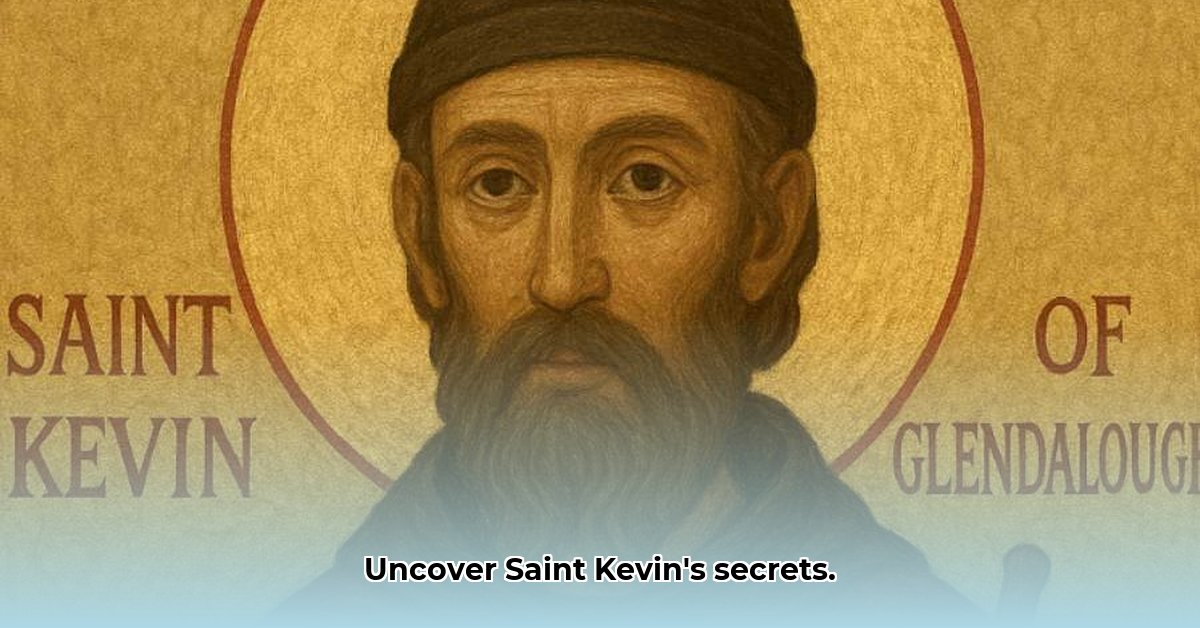
Saint Kevin of Glendalough: Separating Legend from History
Saint Kevin of Glendalough (c. 498 AD – c. 618 AD), or Caoimhín in Irish, remains a captivating figure whose life intertwines historical fact with compelling legend. Born around 498 AD, the precise details of his early years remain shrouded in the mists of time. However, his enduring connection to Glendalough, a picturesque valley in County Wicklow, Ireland, is undeniable. It was here that he established a hermitage, which eventually blossomed into a significant monastic center. But was he solely a contemplative hermit, or did his charisma inspire the growth of this thriving monastic community? This question continues to challenge historians.
Learn more about Saint Kevin here.
Did you know that Glendalough’s transformation from a solitary hermitage to a bustling monastic city speaks volumes about St. Kevin’s leadership? What elements drew so many to this remote valley? These enduring questions fuel ongoing historical exploration.
Glendalough's Rise: From Hermitage to Monastic Hub
Under Kevin's guidance, Glendalough ("valley of the two lakes") experienced a dramatic metamorphosis. It evolved beyond a simple monastery into a bustling monastic city, a vibrant center for religious learning and spiritual practice. Imagine the daily life: scribes diligently copying texts by candlelight, the constant chanting of monks, and the continuous stream of pilgrims seeking solace and spiritual guidance. This extraordinary growth highlights Kevin’s leadership and the powerful appeal of Glendalough in early medieval Ireland. But how did he manage to draw such a diverse following to this isolated area? What unique aspects of his character and spiritual message fueled the growth of the monastery?
The Miracles of Saint Kevin: Fact or Faith?
Numerous miraculous tales surround Saint Kevin, enhancing the aura of mystery surrounding his life. The famous story of the blackbird nesting in his cupped hand is perhaps the most widely known. These narratives, often found in later medieval biographies like the Vita Sancti Caemgni, depict his profound piety and connection with nature. However, separating embellished narratives from historical truth is crucial. Were these accounts literal miracles, or symbolic representations of his deep spirituality? Dr. Mary Catherine O'Sullivan, Professor of Early Irish History at University College Dublin, notes, “Interpreting these accounts requires careful analysis of the medieval mindset and religious beliefs of the time. The miraculous stories often served to reinforce the saint's holiness and inspire faith.” Precisely discerning the line between fact and faith remains a complex task for historians.
Did you know that the Vita Sancti Caemgni, while rich in detail, also contains undeniably legendary elements? This highlights the ongoing challenge of separating fact from faith in studying St. Kevin's life.
A Lasting Legacy: Saint Kevin's Enduring Influence
Even if the authenticity of every miracle remains debatable, Kevin’s lasting impact on Irish history and culture is indisputable. His name is intrinsically linked to Glendalough, and the partially ruined monastic city continues to draw visitors worldwide. It stands as a testament to Ireland's rich past. But how does his legacy resonate in the modern world? His commitment to faith, simplicity, and his transformative impact on Glendalough’s landscape continue to inspire and influence people today.
A staggering number of visitors—over 100,000 annually—make pilgrimages to Glendalough, demonstrating the enduring appeal of Saint Kevin's story and the legacy of this incredible site.
Critically Examining Historical Sources
Understanding Saint Kevin requires a careful evaluation of available sources. Primary sources from his era are exceedingly rare, making the task extremely challenging. Many texts mentioning him were written centuries after his death. While the founding of the monastery and his deep faith are widely accepted, details regarding miracles and the extent of his influence remain subjects of debate.
Analyzing the Vita Sancti Caemgni
The Vita Sancti Caemgni (Life of Saint Kevin) plays a pivotal role in understanding Saint Kevin. It provides a detailed narrative of his life, but it also includes clear legendary elements. Historians meticulously compare its account with other sources, searching for corroboration or identifying contradictions. "The Vita, written centuries after Kevin's death," explains Dr. Liam O'Brien, Professor of Medieval Studies at Trinity College Dublin, “reflects a blend of historical facts filtered through the lens of religious belief and the cultural values of the time.”
How can we determine the reliability of the Vita? An understanding of the social and religious beliefs prevalent at the time of its writing is crucial for assessing its historical accuracy.
Saint Kevin's Enduring Appeal: A Continuous Legacy
Saint Kevin's influence transcends his lifetime. His story has captivated audiences for centuries, prompting reflection on faith, spirituality, and transformative human devotion. This enduring appeal is witnessed in the continuous pilgrimages to Glendalough and the cultural association of his name with faith, nature, and the identity of Ireland. What lessons can we learn from his life? His story serves as a powerful reminder of faith's significant role in shaping both individual lives and cultural heritage.
Further Exploration: Delving Deeper into Saint Kevin's Life
For those interested in learning more, numerous resources are available. Academic journals specializing in Irish and religious history offer in-depth analyses, while popular history books provide more accessible introductions. Lastly, a visit to Glendalough offers an unparalleled opportunity to engage with the landscape that profoundly shaped his life and legacy.